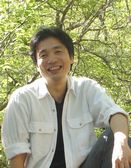JAMSTEC > Research Institute for Value-Added-Information Generation (VAiG) > Center for Mathematical Science and Advanced Technology (MAT) > Member > Kenji Oguni
Members
Kenji Oguni

Director [Principal Researcher]
Japan Agency for Marine-Earth Science and Technology
Center for Mathematical Science and Advanced Technology
3173-25, Showa-machi, Kanazawa-ku, Yokohama-city, Kanagawa, 236-0001, Japan
ogunik
Short CV
Employment
| 2000.4 | Research Associate, Earthquake Research Institute, The University of Tokyo |
| 2004.10 | Associate Professor, Earthquake Research Institute, The University of Tokyo |
| 2009.4 | Associate Professor, Department of System Design Engineering, Keio University |
| 2014.4 | Professor, Department of System Design Engineering, Keio University |
| 2020.4 | Director, Center for Mathematical Science and Advanced Technology, Japan Agency for Marine-Earth Science and Technology |
Education
| 1994.3 | B. E., Civil Engineering, The University of Tokyo |
| 1996.3 | M. E., Civil Engineering, Graduate School of Engineering, The University of Tokyo |
| 2000.3 | Ph.D. in Applied Mechanics, California Institute of Technology |
Research Topics
- Computational mechanics for multi-physics with energy drain due to emergence of discontinuity
- Problems categorized under the conventional definition of multi-physics can be described by the partial differential equations with smooth coefficients and smooth field variables. In this research, the definition of multi-physics is expanded to include the sets of partial differential equations with spontaneous emergence of discontinuity in the coefficients and in the field variables. Based on the general framework to deal with the multi-physics problems with discontinuous field (proposed in Hirobe and Oguni (Physica D, 2017)), I am working on research projects in the field of “computational mechanics for multi-physics with energy drain due to emergence of discontinuity.” The temporal and spatial scale under consideration ranges from nano-micro scale (micro-fabrication, cell mechanics, molecular biology) to kilo-mega scale (geophysics). The following are the nearest targets.
- 1. Pattern formation in the system of non-equilibrium, unsteady multi-physics with energy flow
- Focusing on the governing mechanism for the emergence of a characteristic length scale out of the coupling of the scale-free governing equations, I am proposing a research on “pattern formation in the system of non-equilibrium, unsteady multi-physics with energy flow.” As addressed in the previous research on desiccation cracking (Hirobe and Oguni, (CMAME, 2016)), pattern formation is widely observed in the multi-physics systems with energy drain. I am planning to develop a general (theoretical and numerical) framework to deal with pattern formation in the energy drain cascades observed in multi-physics problems with discontinuity. Using this general framework, I am going to investigate patterns observed in nature in the wide range of temporal and spatial scales. The nearest targets are the formation process of the columnar joints, dynamic fracture of (thermally and chemically) tempered glass, electric discharge and lightning (as electromagnetic phenomena with discontinuity), and the formation process of Liesegang rings.
- 2. Catastrophic failure of damaged materials and structures
- Damages are left as plastic deformations and cracks in the materials and structural members. The plastic deformations supply the driving force of the catastrophic failure of damaged materials and structures while the cracks play the role of the trigger. Since the existing numerical analysis methods are incapable of dynamic fracture in residual stress fields, the catastrophic failure of damaged materials and structures has been left unsolved. Combining the numerical analysis method for dynamic fracture in residual stress field and elasto-plastic analysis, I am going to develop a numerical analysis method to deal with catastrophic failure of damaged materials and structures. Especially, the assessment of the durability of the damaged buildings (undergoing damages by the first hit of the earthquake) against aftershocks is set as the final goal of this research.
